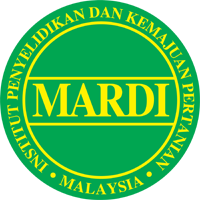G.H. Tan, M.S. Nordin and A.B. Napsiah
Abstract
Phages are obligate intracellular parasites that multiply inside the bacteria and making use of host biosynthetic machinery. They are highly host specific and only attack a particular group species of bacteria. Phage will multiply once they attack the bacteria cells, and releasing several hundred new phages. As a result, the bacteria are destroyed and leaving a clear area or plaque on the agar. Recently, the usage of certain phages against bacterial infection has regained scientific interest due to the resistance of bacteria to antibiotic has become a serious treat to human. Studies showed that upon infection by phages, the host Ralstonia solanacearum cells showed several abnormal behaviours, such as a reduction of culture turbidity, decrease in coloration of the colonies, increase in sensitivity against certain antibiotics and a serious decrease in growth rate, approximately 40–60% from the normal. This study also indicated that phage infection may affect the pathogenicity of the host cells, resulting in the increase of the survival rate of tomato plants.
Full Text (356KB)








